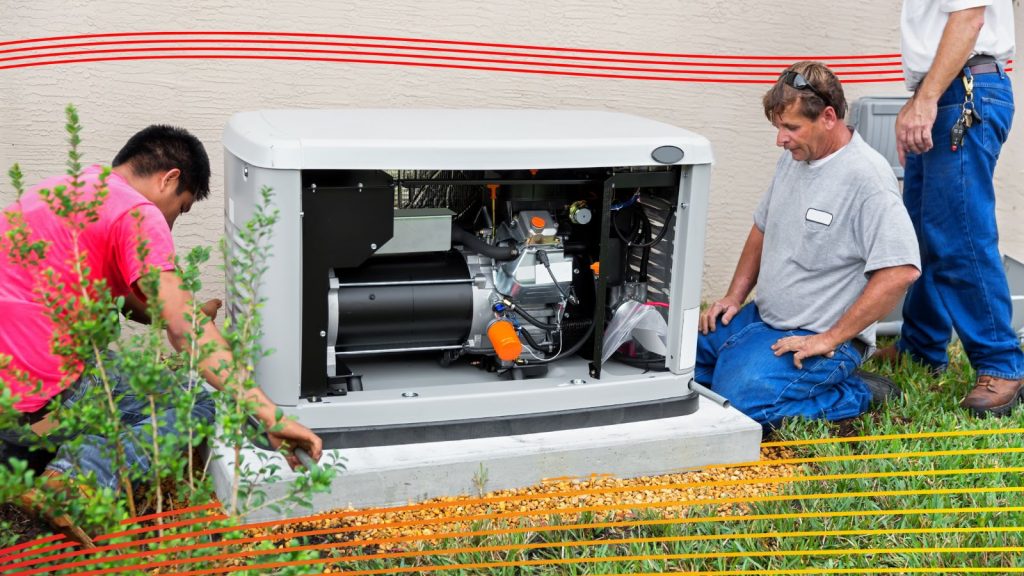A whole-house generator is one of the most valuable investments you can make in home comfort and safety. Whether it’s a winter storm, a power grid issue, or an unexpected outage, having dependable backup power ensures your home remains functional when you need it most. But before choosing a generator, it’s essential to size it correctly. A generator that’s too small won’t support your essential systems, while one that’s too large can be unnecessarily costly and inefficient.
Here’s a step-by-step guide to understanding how to select the right generator size for your home’s energy needs.

Step 1: Identify Your Essential Appliances
The first step in sizing a generator is determining what needs to remain powered during an outage. Start with the essentials—the appliances and systems that keep your home safe and comfortable.
These often include:
- Heating system
- Refrigerator and freezer
- Major kitchen appliances
- Lighting
- Sump pump
- Well pump (if applicable)
- Medical equipment
- Wi-Fi equipment and essential electronics
Make a list of the items you’d want running simultaneously. This will give you a baseline for your minimum power requirements.
Step 2: Determine the Wattage Requirements
Every appliance requires a certain number of watts to operate. Some require additional wattage when starting up—this is known as surge or starting wattage.
You’ll need to gather two key numbers:
- Running watts: the continuous power needed
- Starting watts: the temporary boost needed to turn on
For example, a refrigerator may only need 700 watts to run but require 1,200 watts at startup. Heating and cooling equipment often require significantly higher startup wattage, so including them in your calculation is important.
Add together the running watts of all your essential appliances, then factor in the highest surge wattage among them. This total gives you the generator capacity you need.
Step 3: Consider Whole-Home vs. Partial Backup
Once you understand your power needs, decide whether you want a whole-house generator or a partial (essential circuits only) generator.
Whole-Home Generators
These are designed to power your entire home, including heating and cooling systems, major appliances, and general household circuits. They offer the highest level of comfort and convenience during an outage.
Partial Backup Systems
These generators power only a selected group of essential circuits. They’re sized based on priority appliances rather than full home usage.
If you’re unsure which direction to go, a professional evaluation can help you determine the most practical and cost-effective solution.
Step 4: Factor in Future Energy Needs
It’s smart to plan ahead. If you may add:
- A home addition
- An electric vehicle charger
- A heat pump or larger HVAC system
- Additional appliances or technology
…then selecting a slightly larger generator now will save you from needing an upgrade later.
Step 5: Consult a Professional for Accurate Sizing
While online wattage calculators can offer rough estimates, nothing replaces a professional load analysis. A licensed technician can measure your home’s electrical demands, evaluate your service panel, and recommend a generator size that ensures safe, reliable performance.
Professional sizing also helps prevent risks associated with undersized generators, such as overloaded circuits, equipment strain, and inconsistent power.
Stay Prepared With the Right Generator
A properly sized generator keeps your home running smoothly during outages and protects your appliances and comfort systems from power disruptions. Taking the time to calculate your needs and consult an expert ensures you choose the right system for long-term reliability.
For expert generator sizing, installation, and service, contact Comfort Flow Heating today. We’re here to help keep your home safe, comfortable, and prepared for anything.
